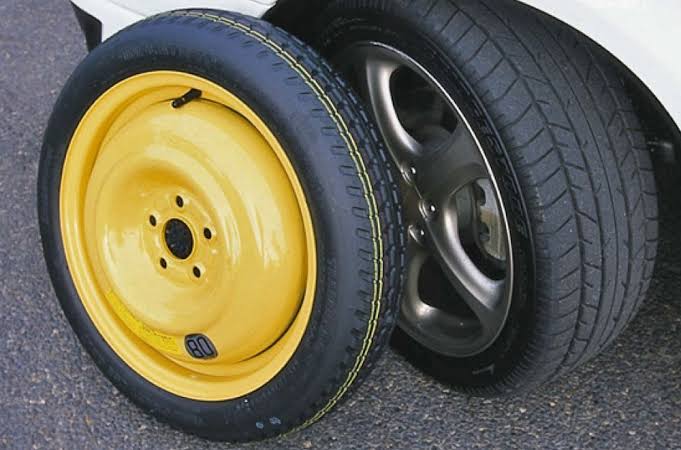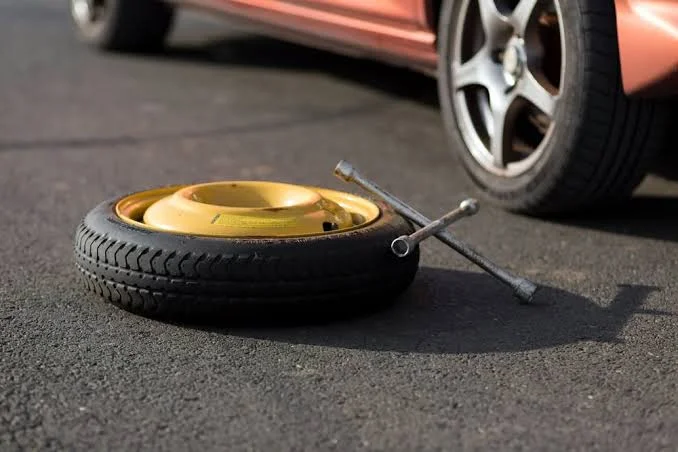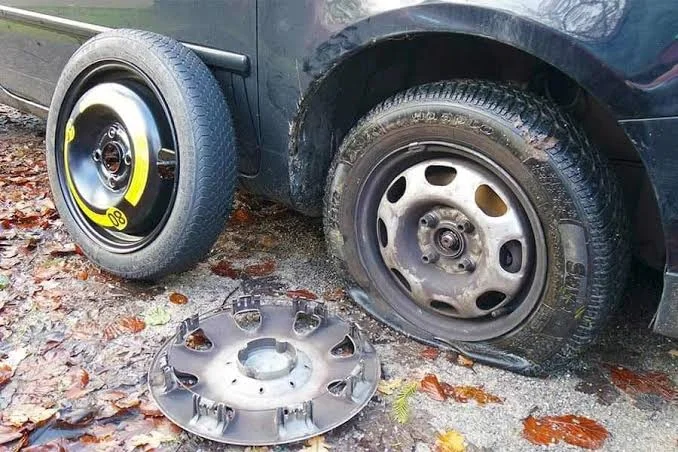AAA rescued over 27 million stranded drivers in 2024 alone. Nearly 450,000 of those calls involved vehicles without spare tires facing flat tire emergencies!
Your donut spare tire seems innocent enough, small, lightweight and designed to get you home safely. But mount it on the wrong position and you could trigger a cascade of mechanical failures that'll leave your wallet significantly lighter.
Many drivers, in fact the majority unknowingly destroy their steering systems, differentials, and drivetrains because they grabbed the nearest wheel position for their emergency spare, or placed the donut tyre in the punctured wheel. This wrong choice can turn a $20 tire repair into a $1000 nightmare.
The Drive System Determines Everything
Your vehicle's drivetrain configuration isn't automotive trivia. It's the critical factor that determines where your donut belongs.
Front wheel drive (FWD)
This vehicles demand specific placement strategies. The front wheels handle steering, braking, and power delivery. Mount a smaller donut tire up front, and you'll immediately notice the steering wheel fighting your grip. The vehicle pulls aggressively toward the donut side, creating dangerous handling characteristics that can cause accidents.
- The solution is counterintuitive but essential: always place the donut on the rear axle for FWD vehicles. If your front tire goes flat, remove a good rear tire and mount it on the front. Put the donut on the rear where it won't interfere with steering control or power delivery.
Rear wheel drive (RWD)
This one present different challenges from the FWD. The rear wheels deliver power while the front handles steering. Here, mounting the donut on the front creates steering instability, but rear placement affects power delivery and can cause dangerous wheel spin, especially in wet conditions.
For RWD vehicles, most manufacturers recommend front placement to maintain steering predictability. However, this compromises braking performance since the front typically handles 60 - 70% of braking force.
All wheel drive
AWD systems represent the most critical scenario for donut placement. These sophisticated drivetrains monitor wheel speeds constantly, adjusting power distribution between axles to maintain traction.
- The golden rule for AWD: donuts go on the rear axle only. Period. No exceptions.
Mount a donut on the front of an AWD vehicle and you'll trigger immediate drivetrain stress. The size difference between your donut and regular tires creates a speed differential that confuses the AWD system. It continuously tries to compensate for what it perceives as wheel slip, overworking clutches, differentials, and transfer cases.
One AWD owner learned this lesson expensively after mounting a donut on the front, their Subaru developed violent steering jerks and AWD warning lights. The differential overheated, requiring $800 in repairs for what started as a simple flat tire.
Four wheel drive
4WD systems operate differently than AWD and most trucks and SUVs spend their time in 2WD mode, only engaging 4WD when needed for traction.
- In 2WD mode, treat your 4WD vehicle like a RWD vehicle. Donut placement follows RWD rules front is generally preferred for steering stability.
Never engage 4WD with a donut mounted. The rigid mechanical connection in 4WD systems cannot tolerate speed differences between front and rear axles. You'll damage the transfer case, front differential, or both.
The Differential Destruction Zone
Differentials allow wheels to rotate at different speeds during turns. They're precisely engineered for specific tire circumferences. Mount a donut that's significantly smaller, and you force the differential to work overtime.
Industry experts consider a 3% diameter difference the danger threshold. Exceed this, and you're entering the differential destruction zone. The constant speed differential generates excessive heat, wearing clutch packs and gear sets prematurely.
Steering System Stress Points
Your steering system expects balanced tire sizes. Mount a donut on a steering axle, and you introduce several problems:
- Torque steer becomes immediate and dangerous. The smaller tire requires different steering inputs, creating unpredictable handling. ABS systems can malfunction, interpreting the speed difference as wheel lockup.
- Alignment components suffer accelerated wear. Tie rods, ball joints, and steering racks work harder to maintain straight line tracking with mismatched tire sizes.
The Proper Emergency Protocol
When faced with a flat tire emergency, follow this systematic approach:
- Step 1: Identify your drivetrain type from your owner's manual or vehicle placard, you should always be aware of this.
- Step 2: For FWD vehicles with front flats mount the donut on rear, move good rear tire to front.
- Step 3: For RWD vehicles typically mount donut on front, but check manufacturer recommendations.
- Step 4: For AWD/4WD vehicles, donut goes on rear only. If rear tire is flat, direct installation is acceptable.
- Step 5: Immediately reduce speed to 50 mph maximum and plan the shortest route to tire repair.
When Donuts Become Dangerous
Modern vehicles present unique challenges for donut usage. Electronic stability control, traction control, and ABS systems all rely on consistent wheel speeds. A donut disrupts these calculations, potentially disabling safety systems when you need them most.
Approximately 40% of new vehicles no longer include spare tires, replacing them with sealant kits or run-flat technology. This trend reflects both weight-saving initiatives and recognition of donut limitations in modern vehicles.
Your donut tire placement decision happens in stressful emergency situations. But understanding these principles beforehand prevents expensive mistakes.
Remember the fundamental rules: FWD donuts go rear, AWD donuts go rear only, RWD follows manufacturer guidance but typically front. When in doubt, prioritize steering control over power delivery.
That $150 spare tire kit might seem expensive until you consider the alternative. Proper donut placement protects thousands of dollars in drivetrain components while keeping you safe until professional repairs can be completed.
Your next flat tire emergency will test this knowledge. Make the right choice, and you'll arrive safely at the repair shop with your wallet intact.



Comments (0)
Please login to join the discussion
Be the first to comment on this article!
Share your thoughts and start the discussion